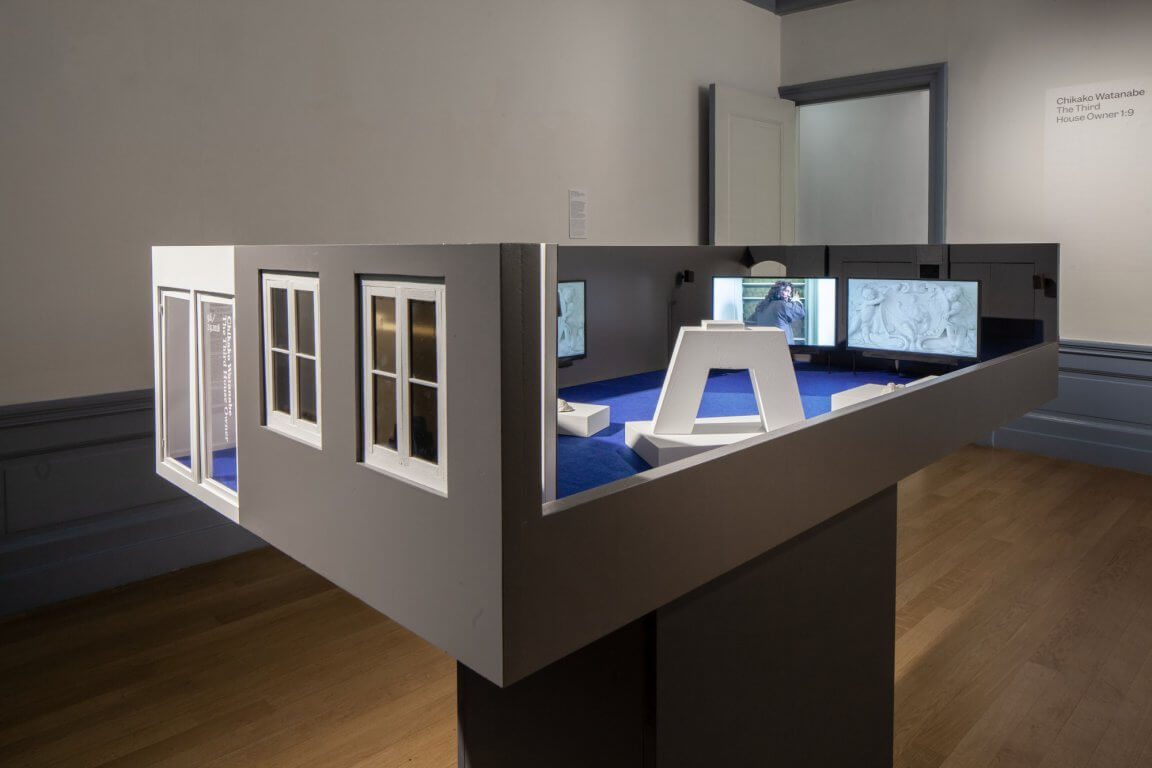A dollhouse installation based on the history of Huis Marseille
On 18 September 2019 Huis Marseille Museum for Photography will be 20 years old. This anniversary is being celebrated with a special book: in Een huis genaamd Marseille (‘a house named Marseille’) Caroline Hanken describes the residential history of the museum’s two houses at Keizersgracht 399 and 401. One of these residents inspired the artist Chikako Watanabe to create the installation The Third House Owner: Wouter Valckenier, who lived at Keizersgracht 401 from 1683 until his death in 1707. In Watanabe’s video he wanders through the galleries in his ‘Japonse rok’ (banyan), musing on everything that has befallen him since the death of his wife and the quarrel with his father-in-law. In an entirely personal stream of associations Watanabe interweaves these images with those of a soap factory producing savon de Marseille by traditional methods, of the murky water in Amsterdam canals and the blue seas of the Mediterranean, of the white chalk of the calanques along the coast at Marseille, and of coins bearing the image of a seal: a reference to Phocaea, the city in Ancient Greece from which adventurous seafarers founded the colony of Massalia – today’s Marseille. In this way she evokes a richly multifaceted image of the various threads that converge on Huis Marseille. Watanabe’s original installation was first shown in the Basement gallery of Huis Marseille in 2018. To mark the museum’s anniversary she is now presenting a dolls’ house version of this installation at Keizersgracht 399, inspired by the famous dolls’ house (ca. 1668–1710) made for the rich merchant’s wife Petronella Oortman, and now part of the Rijksmuseum collection. Employing the same ratio of 1:9 Watanabe made miniature versions of everything, including video projections, ceramic sculptures and soap blocks. The original dolls’ house commissioned by Petronella, hand-crafted in extraordinary detail and fully furnished using costly materials, had been as expensive at the time as an actual canalside house. A quirky detail: the main room of Petronella’s dolls’ house and the ‘sael’ (Red/Period Room) at Keizersgracht 399 resemble each other, not just in terms of colour and atmosphere, but also because the ceiling painting in both rooms was made by the same artist: Johannes Voorhout.
Chikako Watanabe (1969) was born in Kariya, a city in Aichi prefecture in Japan. During her Master’s degree in the ceramics department of the Kyoto City University of Arts she took part in an AIDS poster project run by Artscape in Kyoto. She noticed that the Dutch posters showed an entirely different style than that of the neighbouring countries, and she became fascinated by the Netherlands and the Dutch. In 1995 Watanabe moved to the Netherlands, and she has lived and worked in Amsterdam ever since. She completed a Master’s degree in the Applied Arts department of the Sandberg Institute, and was given a residency at the Rijksakademie van beeldende kunsten (national academy for the visual arts). Watanabe’s projects involve a very individual kind of research into the local cultures and traditions of communities in different countries. She then uses her findings to create mixed-media installations, which often involve performances and workshops.
Book: Een huis genaamd Marseille
Caroline Hanken: Een huis genaamd Marseille. Leven aan een Amsterdamse gracht van de Gouden Eeuw tot nu. Published by Nai010, about €39.95; available in the museum shop.
